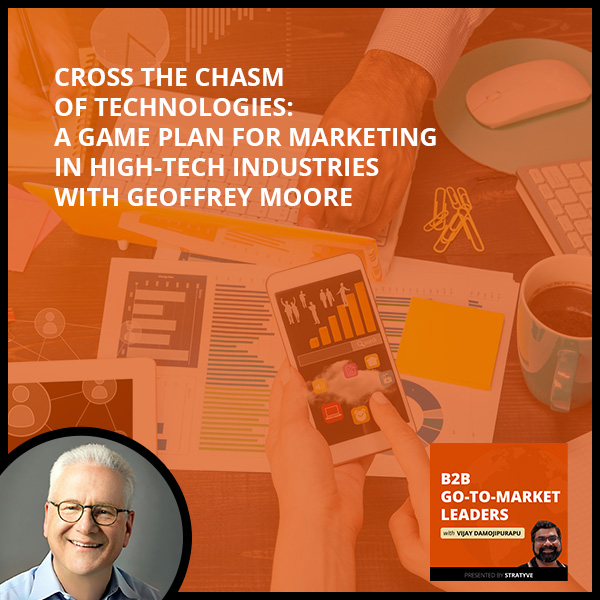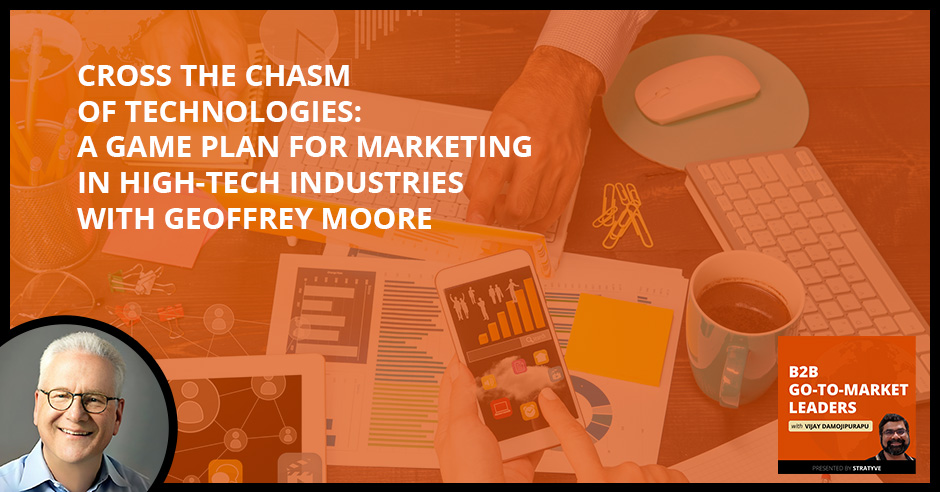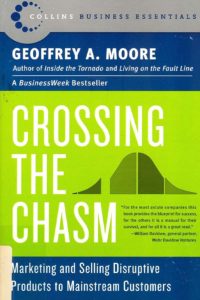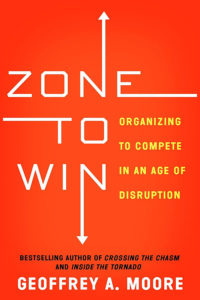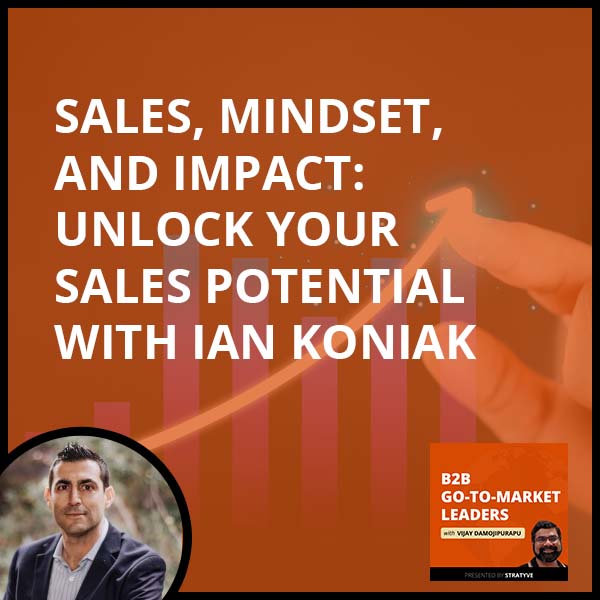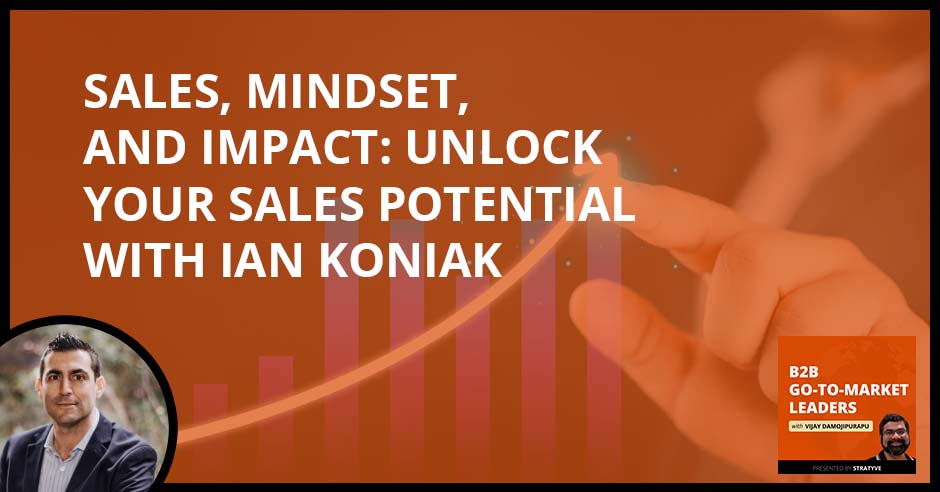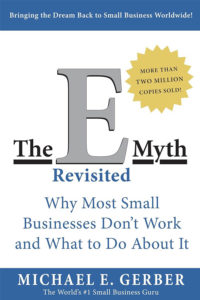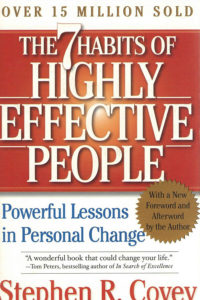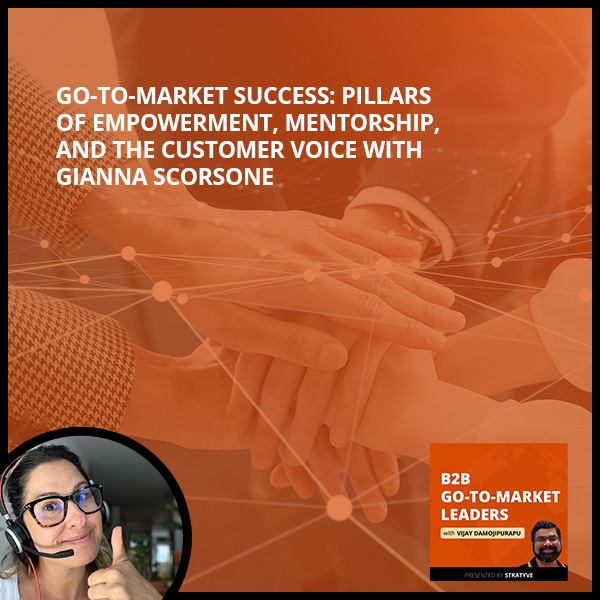
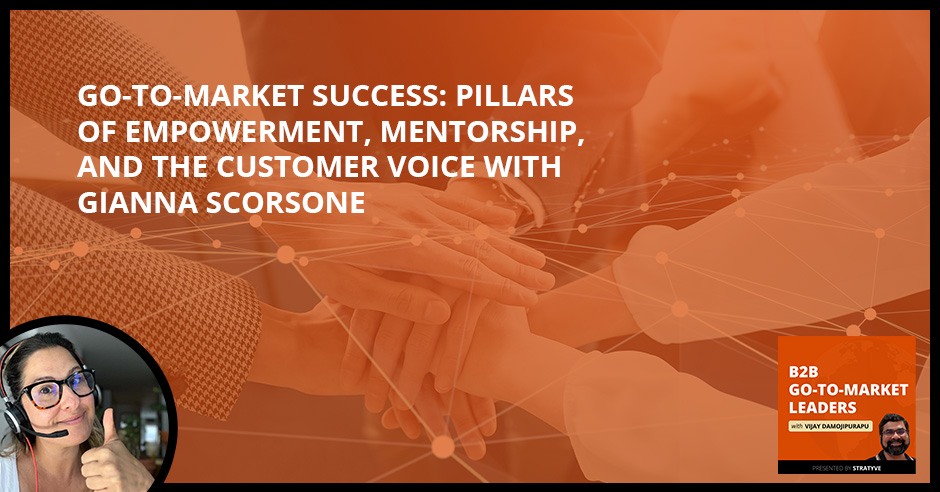
Building successful go-to-market strategies is all about collaboration, respect, and a culture of betterment. It’s a journey of breaking down silos and embracing the path to profitability, where every team member’s value is celebrated. For today’s episode, we will explore the heart and soul of a thriving go-to-market strategy. Meet our guest, Gianna Scorsone, CEO of Champion, who shares the secrets to successful product marketing, and how collaboration with sales and customer success can be the key to winning in the market. Gianna shares her five pillars of empowerment, shedding light on building a culture of betterment and respect within your team. Her journey from profit-focused startups to multi-million-dollar enterprises gave her plenty of lessons on how to build a thriving go-to-market strategy, and today, she shares it with you. Join us in discovering the insights, mentorship, and leadership that drive business success.
—
Listen to the podcast here
Go-To-Market Success: Pillars Of Empowerment, Mentorship, And The Customer Voice With Gianna Scorsone
In this episode, I have the pleasure of hosting another great and exciting guest. Her name is Gianna Scorsone. She is the COO of Champion. Prior to this, she was the GM Head of North America at a hot and fast-scaling startup Aircall. Welcome to the show, Gianna.
Thank you. It’s great to be here.
Let’s dive right into all this conversation with this topic and question, which the readers love as well as the guests love. How do you view and define go-to-market?
I love how we are starting with a very big, bold, and broad question, but I would have to say go-to-market, at its core or boiling it down, is how an organization or a company shows up in the face of the customer. It’s the convergence between marketing, sales, product, or services depending on what your business line is, as well as customer success. I’d say that customer success in the product has traditionally been left out of that equation when you think of go-to-market, but that’s something services do well in thinking about that post-sale customer interaction.
On the product side, there’s customer success in your traditional way, but we are talking about the go-to-market function and driving revenue from it. It focuses on identifying the market, the IPC, and the need, and how a company will position the value prop and show up for the customer wherever they are in that journey. That’s what I meant by product typically leaving out that customer in that post-sale as it relates to generating more revenue. That’s what everyone’s trying to scramble and figure out now.
We will get into that because you are living this day in and day out at Champion. It always starts with the customer and the problem that you are trying to solve, and how your product is solving that, and then you internally align your product, your marketing, your sales, and your customer success around that problem and persona you are pursuing.
You said it better than I did. You got it.
Let’s backtrack here. Let’s zoom out. Why don’t you share with the readers your career story as to what led you to what you are and who you are serving?
Thank you for that opportunity. It’s fun to be able to reflect and think about that journey and how much changed or grown over the years. I have had twenty-plus years as a go-to-market leader. I started in retail and I am so thankful that I got my start there. That is the foundation of who I am as a leader. I’d love to share a little bit more about that. I worked in a very high-volume store. What that meant was that I had anywhere up to 40 staff members working who were not on commission, and I had to learn how to communicate a common goal and how to tap into intrinsically motivating them to want to contribute to that big picture even though they weren’t compensated for it.
Retail has done an amazing job for decades in communicating the right metrics at the right time to inform the employees and the leadership how they need to move forward to beat targets, and at the same time, how you manage running that store, managing all of the customers, and giving that optimal customer experience in a way that feels very personalized but at scale because of the high volume. That was the precipice to understanding the inner workings but doing it live that translates to B2B sales.
Is this a time at Express or somewhere else?
It sure was. That was my time at Express. I got to give them a lot of kudos. Robin Summas was my regional manager and she was powerful in helping me understand what business meant. Likewise, I had a district manager, Liz Hughes, who was a coach and taught me how to coach a team to empowerment and success. That translates so strongly into the B2B tech world. From Express, I went to tech services. I worked for a company called Bluewolf. They were the first and premier partner of Salesforce and developed that blueprint of what partnerships meant within the ecosystem.
It was incredible to learn how to focus on the power of network and how to utilize your customers to be your catalyst to growth and success. We spun off from there. Another tech services firm was Mondo. I helped scale that business as an executive from $0 to $100 million and helped both Bluewolf and Mondo go-to-market. We sold respectively to IBM and the Addison Group. I then hopped over to Aircall moving on the product side for the first time.

You did mention Bluewolf in the services industry around Salesforce implementation.
Salesforce implementation and customization, and then it brought into the full ecosystem HubSpot partnership and Marketo. We were early and fast movers around this idea of building a best-in-class tech stack within the SaaS arena.
Mondo, was it your first entry into tech products?
Mondo was also in services. That was tech and digital marketing staffing, which was a natural result of Bluewolf. They were sister companies for a long time, but we had superfluous infrastructure. To propel growth on both sides, we decided to split both companies, but first in the product was Aircall.
In between, you had a little stunt Women for Biden. That’s pretty interesting.
I felt like I needed to contribute to society. Tech has done me very well in the world. I feel very fortunate about what it has afforded me. I felt like I was able to take some time off. I wanted to give back to the community and to my beliefs in impacting society. I helped run the digital campaign, which was a grassroots effort.
A lot of powerful women from tech and media came together. We formed a group called Women for Biden. My role was part of this strategic group to help operationalize and help activate the hand raisers. I created a blueprint and all of the training to get all of these wonderful women across America, who wanted to contribute to this cause. We enabled them to become advocates and gain more votership. It was a cool experience.
I can see that excitement on your face. After that, you got a break into the tech world Aircall. How did you get that break? Your career journey until that point was in the services world.
It was services, but it was tech services. What I did within Mondo was build our best-in-class tech stack. I was using products all of the time. I ran RevOps. It’s this philosophy of how you use tools, how a user uses them, and what they need to gain from it. From there, honestly, services and products, it’s not that different.
I was able to grow the territory 2.5X or 3X in the year and a half that I was there in partnership with Jeff, my Cofounder of Champion. We were wildly successful. For my Bluewolf days, there was also a strong partnership play, and that was something that I brought to Aircall. That was our fastest-growing growth channel as well. We had a great team leading that front, but I had lived and breathed that ideology for a long time and was able to strengthen and gain more focus and budget around those efforts as well.
Talk to us about Champion. Why did you do that? You were one of the cofounders along with Jeff and your CTO. Tell us about what prompted the three of you to start this.
What prompted me to start with Jeff was I love Jeff as a human being and he’s amazing. Let’s say that. We have partnered with a third Cofounder, Courtney Crispin, who’s the CTO. She is the one who’s powering our ability to bring this to the market, which is exciting. She comes from the Salesforce world and has brought an engineering team that is just true geniuses. They come from the Einstein team and marketing cloud. It’s amazing to see that level of talent at such an early-stage company building that AI moat that’s going to power Champion.
Why we built it? Jeff and I are great partners at Aircall. He was the Global CMO. I ran North America’s go-to-market. What had traditionally worked in our demand gen funnel and our sales funnel was that mix between outbound and inbound, that traditional funnel, but we had this amazing customer base. There was always that thought that we should be doing more with our customers.
As I mentioned, I come from the services world where everything was about your network and harboring your customers to do more with them. That didn’t exist in the product world as much. Marketing traditionally does such an amazing job of focusing on pre-sales of generating leads and demand gen. The focus started to shift a few years ago into customer marketing and how customer marketing can impact revenue channels, but there was still that question mark of how. Honestly, it was a little bit fluffy because it’s so complex and there weren’t great tools to help facilitate that.
We are the first platform to focus on post-sale marketing programs to generate profitable growth through your customer base. As everyone’s talking about efficient growth, the huge part of that equation is driving more revenue and retention within your customer base, and now this is an easy way to execute regular repeatable programs to drive consistency and fill that gap where outbounds are not as effective anymore.
We are hearing from a lot of our customers that traditional demand gen efforts aren’t working the way that they used to, and they need to fill that data with a new revenue source. That’s your customers. I’m passionate about this because it’s a no-brainer. Everyone has talked about it for years and it’s known that it’s cheaper to sell within your customer base. It’s more efficient to do so. It’s easier to do so, and yet that focus hasn’t been there because we have all been hyper-focused in the SaaS world on net new. Now, the market is primed. That shift has come of the understanding that retention is what North Star metric expansion is and generating more hot leads that will convert faster to continue to prime net new as well.
At the surface level, I completely agree and align with what you guys are doing with Champion. I have two questions. I’m curious about how you went about validating the problem and the market size of this. That’s one. The related question is, there’s been this growing movement around customer marketing. There are tech startups that have been funded and raised a good amount of VC money in customer marketing. Let’s start with the first one. How did it go about validating the problem in the space?
How you go about validating the problem is by talking to as many people or your buyer as humanly possible. At this point, I want to say we have spoken to at least 1,000 leaders, and that’s not an exaggeration. That’s where it starts. Also, I or Jeff was this person. We are operators who have both respectively have scaled multiple organizations to the $100 million to $250 million mark, and we experienced these challenges firsthand.
The second related question was whether this falls in the AI domain of customer marketing. There’s been a growing movement in customer marketing. In your interviews with the prospective buyers, how are you focusing on that gap that customer marketing tech companies are not addressing?
That differentiator is we follow the whole customer journey. That’s vastly important because a lot of tech consolidation is also happening now. Part of why there’s a lot of tech consolidation aside from cost is that there’s confusion and complexity to getting all of these data points from all of these disparate tools impacting that one main initiative, which is how we continue to drive revenue and understand the stickiness of our customers.
When you have data all over the place for multiple teams or even the same team, it becomes complex to utilize them in a meaningful way. Where we are coming with our approach and philosophy is that we need to break down silos and understand that the byproduct of what customer marketing is doing impacts the sales team and the customer success team.

We view ourselves as this control center. I didn’t coin that. The head of customer marketing at Slack had said that, and I was like, “You nailed it, Bridget. That’s exactly what it is.” We are this control center for customer marketing to be able to do these plays that are going to impact sales like reference programs and referral programs. First of all, identify who the champions are. That’s where it all starts. That’s through our AI moat.
You get them activated and then you put them into these plays that are going to generate revenue, so references and referrals that will help sales. It’s looking at the user-level aggregate to help power customer success because their tools don’t have user-level visibility. We do. Also, it’s looking at job changes. We track job changes because that’s part of the life cycle of the customer journey. They are going to move on.
That’s your champion. You don’t want to lose them and you don’t need to lose them. Bring them back through the new company that they are with, and at the same time, start getting new champions within that logo that they left. That’s where we have differed from those customer marketing orgs that are out there, as you mentioned.
It’s up to your comfort level and space. Do you mind sharing where you are in terms of business growth, number of customers, funds raised, and revenue?
We are excited. We started our company in April 2023 and we launched our beta in early August 2023. We are very excited about what we brought about, and we have got our first cohort of clients, which is around ten, I believe. Now, we are securing our second cohort of customers. For all of the product people reading, you will be very happy to know all of the engineers out there.
We are doing a great job, Jeff and myself, curating the right list of customers who narrowly fit into the vision of our product. They are early adopters. They are helping us influence our continued roadmap. As you asked, how are we validating this? We are going to continue to validate by getting the right customers on board. We also don’t want to distract our engineering team. We are focused and we have a very acute understanding of the problem that we solve, and we want to make sure that we keep them hyper-focused without taking these peripheral or fringe deals out there.
Did I hear this right that you said you founded the company or you raised the seed down in April 2023 and the first beta went out in August?
We are a studio brand out of High Alpha, and so we had some initial funding from them and we are raising our seed round now.
The reason why I want to highlight that is it is pretty impressive in a short timeframe like April to August and having data customers. That’s very impressive.
They are enterprise-level as well, which is also part of our strategy. We are an enterprise platform. We wanted to go about the market in a way that was sustainable for us and where we wanted to go from the start. It’s incredible that our engineering team produced something powerful enough so that enterprise clients feel comfortable using a beta and are believing in this vision to grow the product with us.
My guess and hypothesis is it’s not that you started doing the market research and lining up the betas in April. That groundwork must have been done way before.
Jeff started in January 2023 doing a lot of this groundwork of talking to very many people. I came on board a little bit afterward, and that was my initiative in the first couple of months that I joined. We formally formed the company in April of 2023. You are right that there were a lot of months of legwork before then. Jeff and I are very successful operators who experience this problem. It’s years of culminating many conversations with people within our networks and peers as we were learning to do and excel in our jobs. This is something that peer-to-peer we have heard for very many years.
January is when Jeff and you guys must have incorporated Champion. In April, you were accepted in the studio, and then August is when you lined up.
January with the studio and April incorporated, but January to April was all about market research.
The reason why I’m asking is there are quite a few aspiring founders of this show, so this is good advice to them as to how to pursue the validation piece.
If anyone reading wants to ask more direct questions, feel free to reach out on LinkedIn. We are happy to have conversations with new founders as well.
Thank you for sharing the tactical piece as to how you guys founded, incorporated, and went to market for Champion. Switching gears a bit over here, you had a very storied and long career when it comes to go-to-market and go-to-market failures. You have seen enough of those, so why don’t you share it with us? It’s up to you if you want to start with a failure or a success, but we love to know both success and failure stories. It can be from Mondo or Aircall.
This is a silly example but it sticks with me because part of my experience and part of what I have done is build sales training. I have enabled thousands of reps over the years to have best-in-class practices. It’s so strange to now be back in the sales arena on the floor doing the sales myself. I feel like I’m rewinding to the beginnings of my career. You would think that I have all of the best practices down the path and that I’m holding myself accountable to all of them. My founder’s life was slammed, having to change hats from investor call to board call, to new client call, to internal meeting, and to writing content for the website, and I had a meeting. Honestly, I simply didn’t prepare for the meeting.
I realized, halfway in when they brought it up to me that we knew someone in common. Their boss was someone that I had previously worked with. Had I brought that up or had I used that network opportunity, it would have driven my credibility way up and it would have made for a much warmer conversation in the beginning. On top of that, it showed that I didn’t do my homework. If you are not putting the effort in for your customer or for your prospect ahead of time, why on earth would they think that you’d put the effort in for them afterward? It’s treating them transactionally.

It’s treating them like a number as opposed to an individual with real needs, real pain, and a real story. It was embarrassing, quite frankly. I was embarrassed with myself and I have not made that mistake again. It’s about that balance and making sure that I’m maximizing every opportunity because, at this stage of the game, you have to and, at any stage, it’s the right thing to do. That’s how you build a thoughtful organization.
I can see why it led to an embarrassing moment, but I’m assuming it wouldn’t have been that expensive failure or that the cost was not that bad an option. Is that fair?
It wasn’t that bad. That’s fair.
Let’s switch gears. Go-to-market success story from your time at Aircall.
We worked very prominently in our partnership strategy. That was part of our major growth strategy for North America. We put a lot of focus and attention and had a world-class team running the efforts. We wanted to build something very thoughtful and we had a very strong integration with HubSpot. We knew that creating that opportunity and stickiness for our common customers or using that as the right demand gen channel of people who use HubSpot, and then use Aircall would be stickier.
It was how we continue to gain that market share, how we dominate within their marketplace, and how we get their attention so that HubSpot is seeing the value that Aircall brings to the table with them in that better-together story. Louis Dumortier ran the efforts and still does on the HubSpot relationship and the whole strategy.
He did an incredible job of that multi-pronged approach of thinking about rep to wrap, on how we are enabling an easier time for our sales reps to get to know their reps to get those leads. From an executive level, I was having regular monthly calls with their executive teams to get that buy-in as well and understand what some of the pain points were from their perspective.
We then had the whole ecosystem play within that as well. It was a multi-pronged approach. We got word that they were going to come out with this best-in-class tech stock report. They said to one of their executives, “I’m going to make it irresponsible for you guys not to put us on that list.” She was like, “We will see.” Unfortunately, it happened after my time at Aircall, but efforts were so there that they did name us their best-in-class tech stack. Must have, I believe, is how they named it. Also, that easy go-to-market strategy. As we mentioned before, it’s not just marketing and sales, but it’s partnerships and how you position to gain more market share.

Leaning on your partners and partner ecosystem is a big lever in the go-to-market strategy. A lead-up question to that is what are 1 or 2 areas within go-to-market that people lean on you for? Maybe it’s sales, go-to-market, sales enablement, SDR, or BDR.
My passion and what I bring to the table is helping to empower emerging leaders to develop their ability to lead in a very meaningful way. It’s this cross between creating a feedback-first culture of betterment paired with arming emerging leaders to drive more success and helping them grow. These two things married together create this community of drivers and a community where every level of your players or teammates realizes the value that they drive to the overall big picture. This is what I do well. How this translates now is I mentor a heck of a lot of people that I have managed or have been in my teams throughout the years.
How do you do that? It’s not that you are doing something. It comes automatically and naturally for you.
It’s a playbook. It does come naturally to me, but you have to systematize it. When you are stressed out, it’s easy to lose sight of what works well. It’s like any process. I will share with you my five pillars, but there’s so much more to this. The five pillars of empowerment are this, and this is to the individual player. One, make their financial standings, like their salary, make it a non-issue. Make sure they are being paid market value. It doesn’t have to be top of market value, but there shouldn’t be a question of, “Am I being taken advantage of?” Pay them fairly, number one.
You have to systematize playbooks because it's really easy to lose sight of what works really well. Share on XNumber two is to help break silos and help them see and respect the people around them. They have to feel like they respect the other teams and the people around them. That’s holding other teams accountable, that’s holding each person accountable, and that’s holding themselves accountable, but it’s also to break silos and drive mutual respect.
Next is to make sure they feel valued. How are you communicating to them that you see that they contribute to the big picture? That is constant every day that needs to happen. Number four is they have to feel they are doing valuable work. One is that, “I have to make them feel valued,” and the other is they have to feel that they are doing valuable work. They have to be stimulated in what they are doing. That also means making sure that they are in the right role and doing work that contributes to the big picture.
Number five, learning and growing. That’s the most important one. The minute people feel like they are not learning and growing anymore, this generational workforce, the Gen Zs, will move or they will leave. They love to learn and grow, and that’s what I love about them. There needs to be a feedback-first culture. They need to get constant feedback and how they can improve because then they feel like, “My time here is worth it.” I mentioned the five, but outside of the salary, if you have the other four, the salary becomes even less important. It has to be paid fairly. Where it starts is these five pillars, and then thinking about how you build programs, how you build communication, and how you build feedback to fill these five pillars.
This is great advice for people who are managing, mentoring, and growing. Thank you for sharing that.
You heard it here first.
That’s your expert and secret sauce. Switching gears once again. You did work on so many of the go-to-market teams. You led so many of the go-to-market teams. I’m 100% sure that you worked with product marketing functions in all of these in your various domains. What are the top 1, 2, or 3 things that you saw product marketing do very well that helped in your go-to-market?
The number one thing is to work with sales and work with customer success. The customer voice should power product marketing. How you get to that customer’s voice is sure products and different tools, but make sales and customer success feel a part of the product marketing function, building that roadmap, and being that voice for the customers.
The customer voice should really power product marketing. Share on XWhat I’m hearing if I had to articulate it is to work very closely with and involve folks from sales and customer success in the initiatives. Be it a product launch, be it building new product content, or even driving product adoption in various segments.
I love how you have broken it down into the different ways that product marketing needs to focus on different areas within that lifecycle as well. That’s exactly right.
Coming to the last couple of questions here, if you were to go back in time, who are the influencers, mentors, coaches, or managers that played a big role in your career?
I love this moment. There have been so many at different points. What’s so beautiful about this idea of a mentor is that they can come and go, and you will have different people influence you at different times, that readiness. The universe magically finds you those right people within your scope and space for what you need at that moment in time.
What's so beautiful about this idea of mentors is they can come and go and you'll have different people influence you at different times. Share on XI mentioned Robin Summas and Liz Hughes. Those were my early days at Express. They certainly impacted my ability to understand how to drive a machine in a very inspiring and motivating way. From there, I would say Bluewolf and Mondo days, Mike Kirven and Eric Berridge were the CEOs, two cofounders. Mike Kirven instilled in me the path to profitability.
He made us do things cheap because he was cheap. I loved the man to death. We built a $100 million business with 14% EBITDA, and it forced us to be extremely creative and understand how to create the right operational efficiencies to drive profitability. It made me think outside of the box, and it made me think about how to best support and enable the path to productivity for all sales reps in marketing. That was a valuable lesson and helped fuel my know-how in Champion.
Eric Berridge brought to the table to dream big and have great vision, see the opportunity, and not be afraid to be that market breaker who’s going to bring something influential, and that’s what we did at Bluewolf. We created that blueprint of what it meant to be a partnership ecosystem company. No other company and no big consultant firm did what Bluewolf did. That was Eric Berridge, Corinne Sklar, and Jolene Chan. They were truly amazing to learn from them. Also, Jeff Reekers, my Cofounder. He heavily influenced and it’s why I’m here now as well. I would like to believe he’d say the same about me. We complement each other well and we have had this approach of let’s play on each other’s strengths. We complement each other so well because of that.
Kudos to you for recognizing and calling out all those folks who played a big role in shaping your career.
There were so many.
That’s why I don’t like asking these questions. It puts you on the spot.
It’s a limit. We have to limit it so that we don’t bore people. During my time at Aircall, my entire team, the North America team, and also the people who were not traditionally in my org, we treated North America as one whole. The marketing team of North America and the sales ops team enablement support, we created this environment where we broke down silos and drove and respected each other. We all looked at what is the one goal we want North America to dominate and how we are going to get there together.
We did these workshops. Madelyn DePrey, who’s now VP of Customer Success at Aircall, led a workshop on the customer journey and looked at the experience through their lens at each stage of the customer journey. We grouped the entire North American team into that, and then we ideated and solved pain points and problems we saw along the way to improve our performance and therefore our results.
Everyone in North America at Aircall heavily influenced my growth as a leader because I was able to become that leader I’d always wanted to be and create a culture of betterment but of respect where everyone wanted the team to win, not just self. That was one of the most inspiring moments of my career. I thank them.
The list goes on and on. Something that caught my attention and this is big on my mind nowadays is how you build that financial muscle, the discipline around profitability. I don’t know if that person or the leader was from Bluewolf or Mondo, but you did mention building a discipline around thinking out of the box and around the metrics. Walk us through that playbook. Are there any rituals that you do on a daily, weekly, or monthly basis? Maybe you work with the head of finance.
We work with the head of finance. I like having budgets upfront like, “Let’s do some quick dirty modeling. What’s our budget? What are we trying to achieve?” Let’s go bottom up and build to how we get there. If you do that, it’s quite simple. If you don’t hit your revenue targets, then the next quarter, you have to decrease the cost and figure out a way to get there. In a services firm, that’s a little bit easier.
From the product perspective, it’s acutely looking at it. We have got our metrics LTV to CAC. It shows thinking about, especially at our stage, even all those little extra costs like booking travel. Do it smartly so that you have that extra little wiggle room. Don’t spend superfluously. Every dollar adds up. It is being that scrutinous, but it is looking at and making sure that you have got the right metrics in place and it’s holding yourself to that standard. From the product perspective, what everyone is trying to do within SaaS now is readdressing what those expectations are. Resetting those benchmarks of what the ROI should be.
How often would you look at these numbers, the budget, as well as the spending and the pipeline?
I am looking at them monthly. You can’t go too crazy, and that’s what you need your finance team for. You don’t want to get too nuts. You also do need to invest to see a return as well. It’s having some trust also in what you are doing so that you don’t go too off course. Invest in events that are the right go-to-market strategy for you, or if demand gen isn’t working traditional outbound, what is working and how can you lean into that? That’s a little bit of how you can think about it. If your revenue figures aren’t there, then figure out what is working and lean into that. That’s a way to get to profitability in a more manageable way.
People can go crazy and look at a daily oracle. Weekly, I have seen people do that, but what you are recommending is monthly.
Finance is looking at it weekly.
The final question for you is, if you were to turn back the clock, what advice would you give to your younger self on day one of your go-to-market journey?
I would say trust yourself. You got this. A wonderful career is ahead of you. Take the opportunities. Know that you belong. Trust that every decision you make is going to lead to a path forward. Continue to take risks and adjust along the way. To be honest with you, I love my career. I’m so proud of myself. I don’t know that I want to change anything. Could I have done better? Sure, but maybe not at the same time. I’m incredibly grateful. To my former self, I would say trust yourself and enjoy the journey along the way.
Trust yourself. You've got this. A wonderful career is ahead of you. Take the opportunities and know that you belong. Share on XThank you so much for sharing those insights and the journey. Good luck to you and the team at Champion.
Thank you so very much.
Important Links
Love the show? Subscribe, rate, review, and share! http://stratyve.com/

